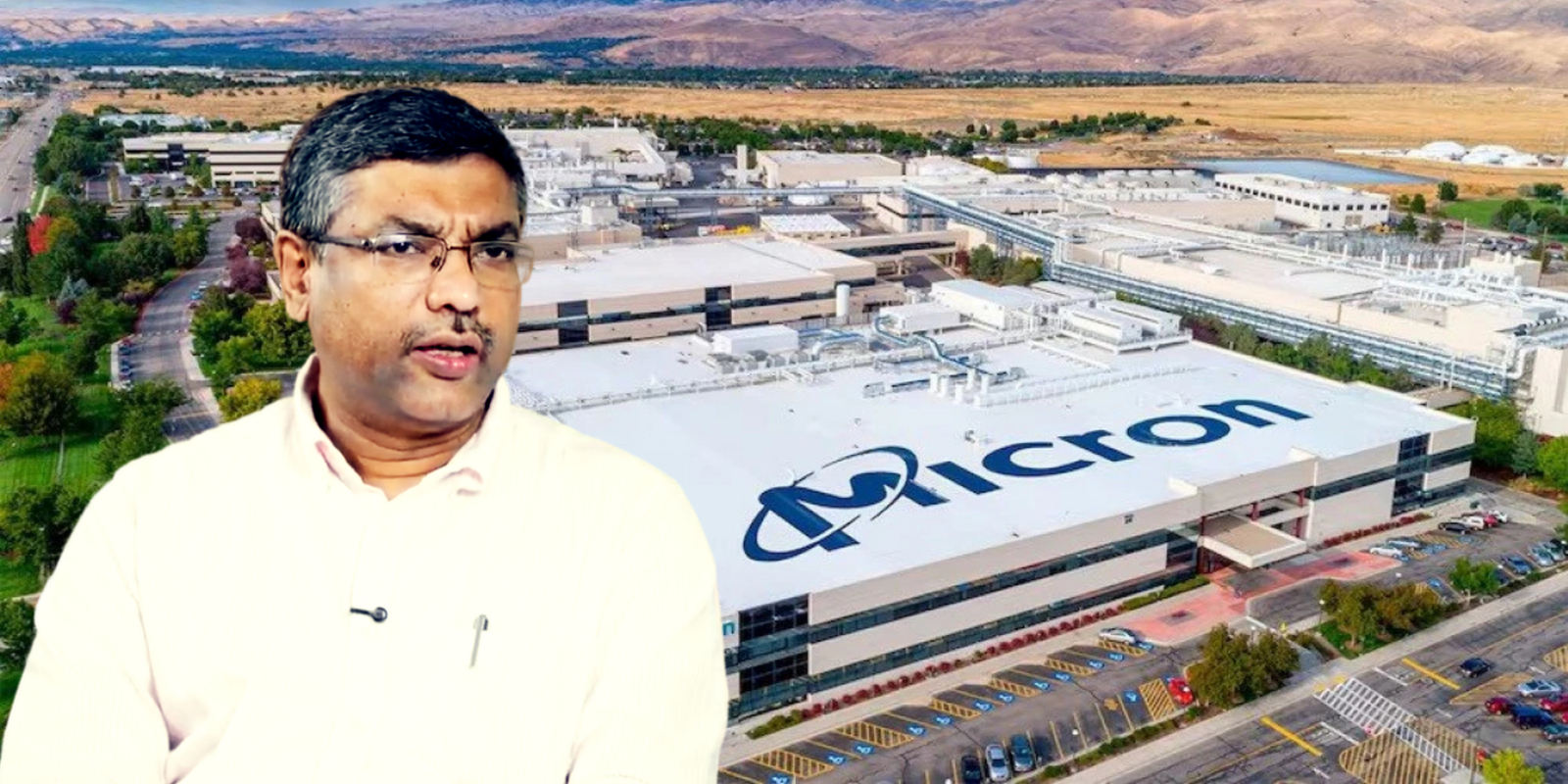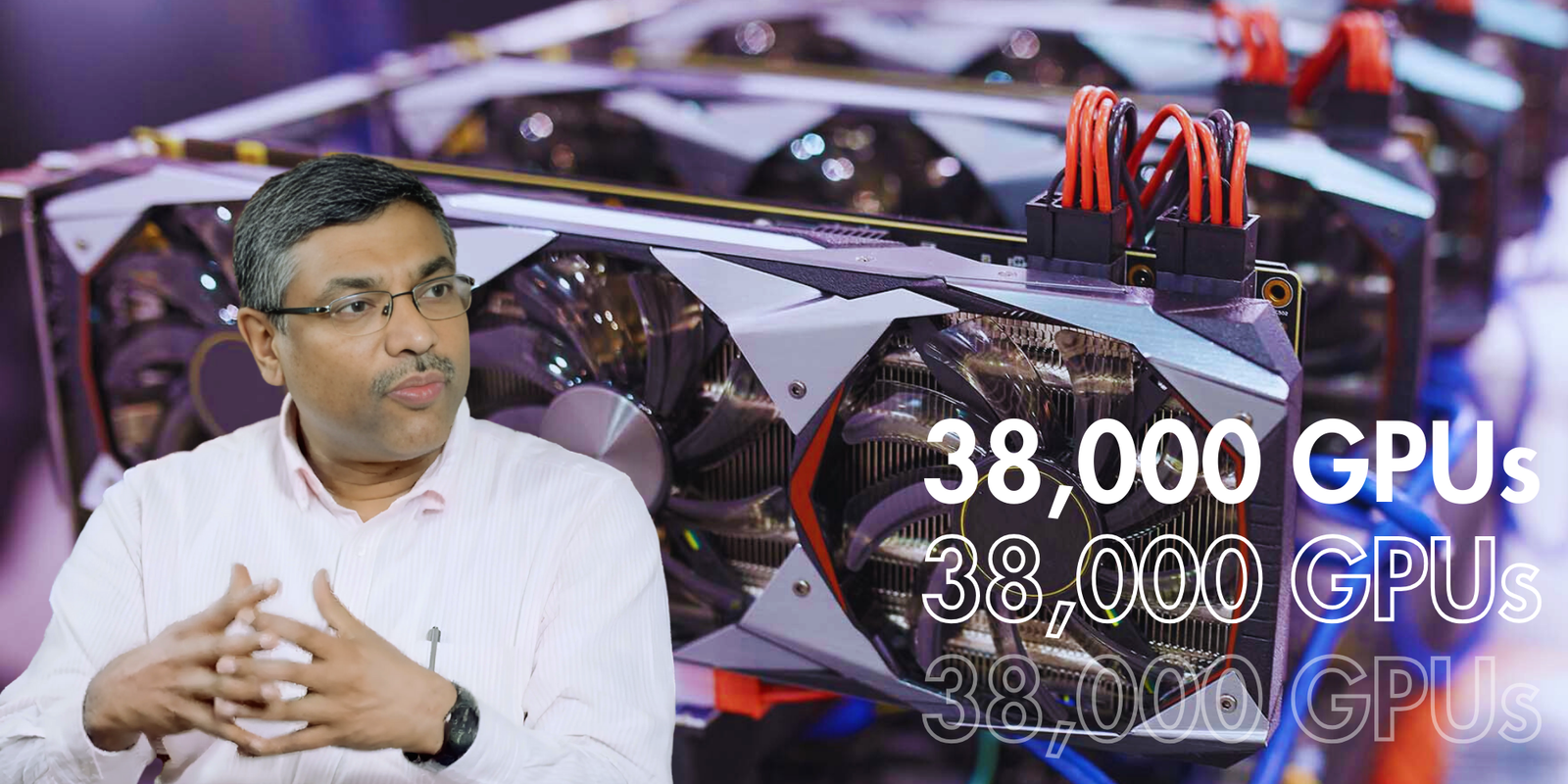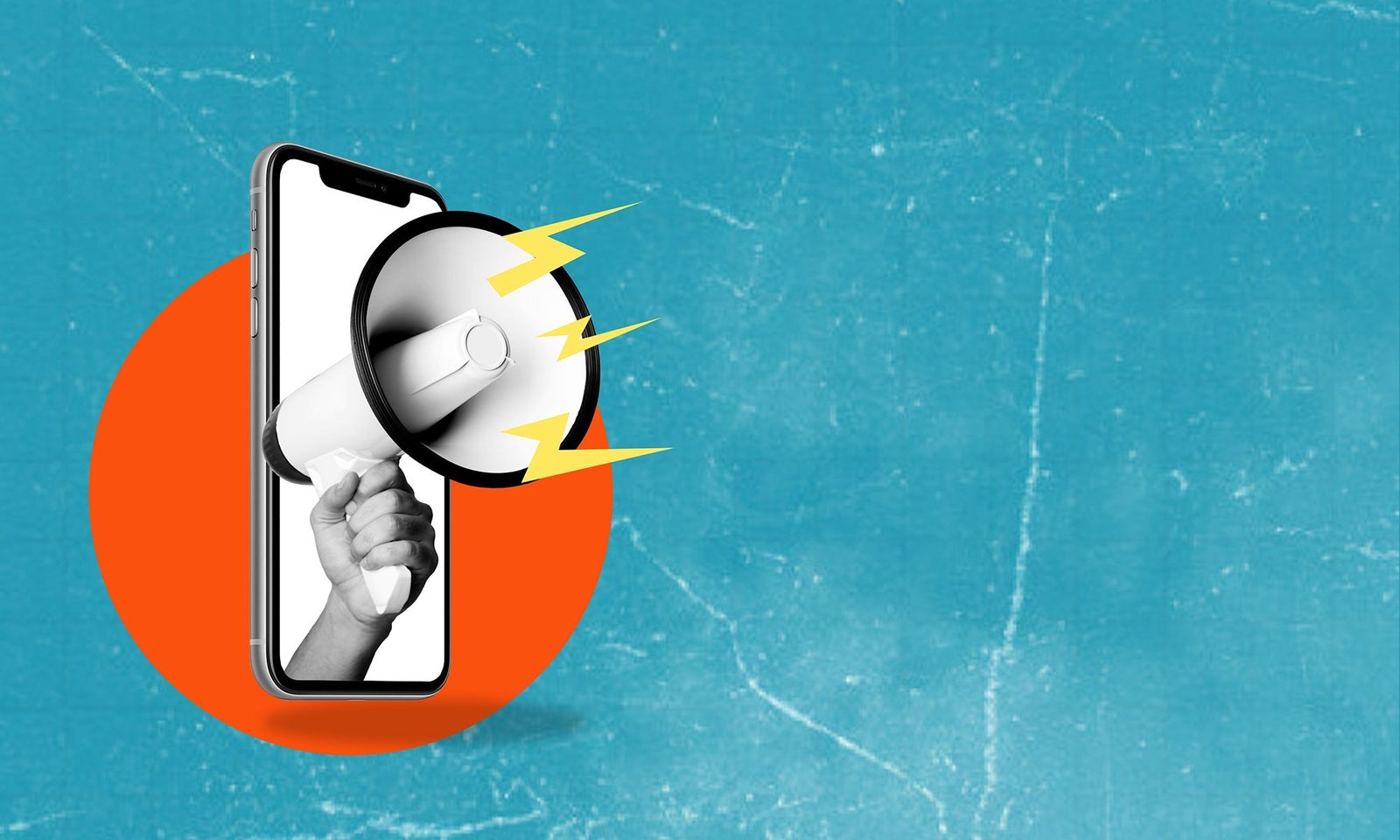SatLeo Labs: India's Thermal Intelligence from Space
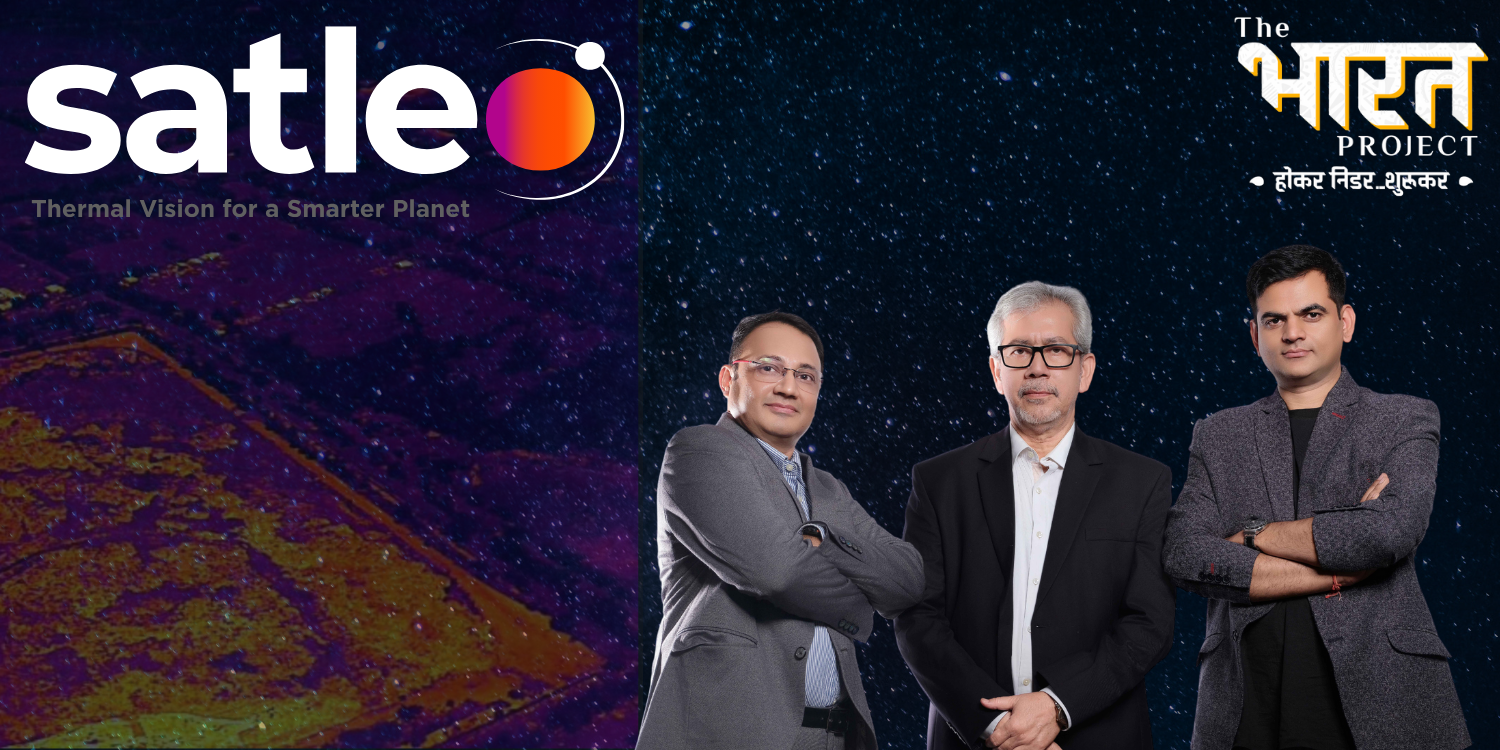

- SatLeo Labs delivers sub-10 m, high-cadence thermal intelligence via satellites.
- Co-founded by industry veteran Shravan Bhati, ex-ISRO scientist Dr. Ranendu Ghosh, and strategist Urmil Bakhai.
- Combines MWIR/LWIR imaging and onboard AI to power climate, agriculture, and urban applications.
- Backed by IN-SPACe and ISRO, with a $3.3 million pre-seed round to fund its TAPAS-1 tech demo.
- Plans a global constellation delivering API-first, real-time thermal data by 2026.
” data-brand=”yourstory” contenteditable=”false” data-clicktext=”” data-clickurl=”” data-pageurl=”https://yourstory.com/2025/08/satleo-labs-thermal-intelligence-satellite” data-sectiontype=”Key Takeaways” data-emailid=”aasma@yourstory.com”>
font-size: 1rem;
padding-bottom: 1.1rem;
color: #171B1C;
width: auto !important;
padding: 1.5rem 0.875rem;
margin: 1rem 0rem !important;
background: #FFFEF5;
box-shadow: 0px 4px 24px rgba(130, 150, 165, 0.25);
height: 100%;
display: block;
position: relative;
max-width: unset;
}
.keyTakeAWaysContainer li, .keyTakeAWaysContainer p{
font-family: Adobe Caslon Pro !important;
font-style: normal;
font-weight: 400 !important;
font-size: 21px !important;
line-height: 29px !important;
color: #0F171C !important;
}
.ql-editor .keyTakeAWaysTitlePara{
font-family: Adobe Caslon Pro !important;
font-style: normal;
font-weight: 700 !important;
font-size: 20px !important;
color: #FFFFFF !important;
margin: 0 !important;
text-align: center;
line-height: 20px !important;
}
.keyTakeAWaysTitlePara {
font-family: Adobe Caslon Pro !important;
font-style: normal;
font-weight: 700 !important;
font-size: 22px !important;
color: #FFFFFF !important;
margin: 0 !important;
text-align: center;
line-height: 20px !important;
margin-top: 5px !important;
}
.keyTakeAWaysWrapper{
position: relative;
margin: 6% 0px;
}
.ql-editor .keyTakeAWays{
margin: 1rem !important;
}
.keyTakeAWays{
margin: 3rem 1rem !important;
}
.keyTakeAWays ol li:before {
counter-increment: headings;
content: counter(headings) ”;
}
.ql-editor .keyTakeAWays ol li{
padding-top: 2rem;
list-style-position:outside;
list-style-type: none;
}
.ql-editor .keyTakeAWays ul li{
padding-top: 2rem;
list-style-position:outside;
list-style-type: disc;
}
.keyTakeAWays ol li{
padding-top: 2rem;
list-style-position:outside;
list-style-type: none;
}
.keyTakeAWays ul li{
padding-top: 2rem;
list-style-position:outside;
list-style-type: disc;
}
.keyTakeAWays ol li{
padding-top: 2rem;
list-style-position:outside;
list-style-type: none;
display: table;
}
.keyTakeAWays ul li{
padding-top: 2rem;
list-style-position:outside;
list-style-type: disc;
}
.keyTakeAWays ol li:not(.ql-direction-rtl), .keyTakeAWays ul li:not(.ql-direction-rtl){
padding-left: 0 !important;
}
.ql-editor .keyTakeAWays li::before,
.ql-editor .keyTakeAWays li::marker {
width: 12px;
height: 24px;
font-family: Adobe Caslon Pro !important;
font-style: normal;
font-weight: 400;
font-size: 21px;
line-height: 24px;
color: #0F171C;
padding-right: 0em;
vertical-align: middle !important;
}
.keyTakeAWays li::before,
.keyTakeAWays li::marker {
width: 12px;
height: 24px;
font-family: Adobe Caslon Pro !important;
font-style: normal;
font-weight: 400;
font-size: 21px;
line-height: 24px;
color: #0F171C;
padding-right: 0em;
vertical-align: middle !important;
}
.keyTakeAWays li::marker {
unicode-bidi: unset !important;
font-variant-numeric: unset !important;
text-transform: none;
text-indent: 0px !important;
text-align: unset !important;
text-align-last: unset !important;
vertical-align: middle !important;
}
.keyTakeAWays ul > li::before {
display: inline-block;
white-space: nowrap;
width: unset;
}
.ql-editor .keyTakeAWays .inline_link{
color: #0F171C !important;
border: 1px solid #0F171C;
padding: 2px 5px 0px !important;
text-decoration: none !important;
margin: 0px 3px 5px !important;
}
.keyTakeAWays .inline_link,
.keyTakeAWaysContainer > ol > li > .link,
.keyTakeAWaysContainer > ul > li > .link{
color: #0F171C !important;
border: 1px solid #0F171C;
padding: 5px 5px 0px 5px !important;
text-decoration: none !important;
text-align: center !important;
display: inline-block !important;
margin: 0px 3px 5px !important;
font-weight: 0;
cursor: pointer !important;
}
.ql-editor .keyTakeAWays .inline_link,
.ql-editor .keyTakeAWaysContainer > ol > li > .link,
.ql-editor .keyTakeAWaysContainer > ul > li > .link{
color: #0F171C !important;
border: 1px solid #0F171C;
padding: 5px 5px 0px 5px !important;
text-decoration: none !important;
text-align: end !important;
display: inline-block !important;
margin: 0px 3px 5px !important;
cursor: pointer !important;
}
.keyTakeAWays u {
border-bottom: 1px solid #0F171C;
text-decoration: none !important;
padding-bottom: 0px !important;
display: inline-block !important;
width: auto !important;
}
.keyTakeAWays .keyTakeAWaysPointsWrapper{
margin: unset !important;
}
.keyTakeAWaysContainer p:is(:first-child){
margin: 4% 1% 3% 5.5%;
}
.keyTakeAWaysContainer p:not(:first-child) {
margin: 4% 1% 3% 5.5%;
}
.keyTakeAWaysContainer p:last-child:has(br:only-child) {
margin: 0 !important;
}
.keyTakeAWaysContainer p:is(:first-child) .keyTakeAWaysTitleWrapper{
top: -1rem;
}
.keyTakeAWays .company-widget {
font-size: 20px !important;
color: #000000 !important;
cursor: pointer !important;
font-weight: 600 !important;
font-family: Adobe Caslon Pro !important;
display: unset !important;
}
.ql-editor .keyTakeAWays .company-widget::after,
.keyTakeAWays .company-widget::after {
font-family: pt-sans !important;
content: ‘i’;
font-size: 12px !important;
border-radius: 20px !important;
border: 2.6px solid #000000 !important;
color: #000000 !important;
transform: translateY(-24%) !important;
line-height: 14px !important;
display: inline-block !important;
height: 17px !important;
width: 17px !important;
margin: 0px 0.2rem !important;
text-align: center !important;
font-weight: 900;
padding-top: 2px;
}
.ql-editor .keyTakeAWaysTitleWrapper {
height: 37px;
width: 181px;
display: flex;
align-items: center;
background: black;
justify-content: center;
position: absolute;
top: -1rem;
left: 6%;
}
.keyTakeAWaysTitleWrapper {
height: 37px;
width: 210px;
display: flex;
align-items: center;
background: black;
justify-content: center;
position: absolute;
top: -1rem;
left: 6%;
}
.ql-editor .keyTakeAWays ul {
counter-reset: headings;
}
.keyTakeAWays ul {
counter-reset: headings;
}
.ql-editor .keyTakeAWays ol {
counter-reset: headings;
}
.keyTakeAWays ol {
counter-reset: headings;
}
.keyTakeAWays ol{
margin: 0 !important;
padding: 0 !important;
}
.ql-editor .keyTakeAWays ul, .ql-editor .keyTakeAWays ol {
margin: 0px 0px 0px 0.8rem !important;
padding: 0 !important;
border-collapse: separate;
border-spacing: 1.5rem;
}
.keyTakeAWays ul{
margin: 0px 0px 0px 0.8rem !important;
padding: 0 !important;
border-collapse: separate;
border-spacing: 1rem 2rem;
}
.keyTakeAWays ol {
margin: 0px 0px 0px 0.5rem !important;
padding: 0 !important;
border-collapse: separate;
border-spacing: 1rem 2rem;
}
.ql-editor .keyTakeAWays ol, .ql-editor .keyTakeAWays ol {
padding: 0 !important;
border-collapse: separate;
border-spacing: 1.5rem;
}
.keyTakeAWays ol {
display: table !important;
}
.keyTakeAWays ul {
display: table !important;
}
.keyTakeAWays ol li {
list-style: none !important;
display: table-row !important;
}
.keyTakeAWays ul li {
list-style: none !important;
display: table-row !important;
text-indent: unset !important;
}
.keyTakeAWays ol li::before {
display: table-cell !important;
text-align: right !important;
vertical-align: middle !important;
}
.keyTakeAWays ul li::before {
display: table-cell !important;
text-align: right !important;
padding-right: 0rem !important;
content: “\2022” !important;
vertical-align: middle !important;
}
.ql-editor .keyTakeAWays ul li:not(.ql-direction-rtl)::before{
margin: 0px !important;
}
@media (max-width: 769px) {
.keyTakeAWaysContainer p:is(:first-child){
margin: 13% 1% 3% 5.5% !important;
}
.keyTakeAWaysContainer p:not(:first-child){
margin: 4% 1% 3% 5.5% !important;
}
.keyTakeAWays ul, .keyTakeAWays ol{
margin: 0px !important;
}
.keyTakeAWays .inline_link,
.keyTakeAWaysContainer > ol > li > .link,
.keyTakeAWaysContainer > ul > li > .link{
text-align: center !important;
}
.keyTakeAWaysTitleWrapper{
width: 155px;
height: 30px;
top: -1rem;
left: 12.5%;
}
.ql-editor .keyTakeAWaysTitlePara{
font-family: Adobe Caslon Pro !important;
font-style: normal;
font-weight: 400 !important;
font-size: 16px !important;
}
.keyTakeAWaysTitlePara{
font-family: Adobe Caslon Pro !important;
font-style: normal;
font-weight: 400 !important;
font-size: 16px !important;
margin-top: 5px !important;
}
.keyTakeAWaysContainer{
margin: 1% 0px 0rem 0px !important;
}
.keyTakeAWaysContainer li, .keyTakeAWaysContainer p{
font-family: Adobe Caslon Pro !important;
font-style: normal;
font-weight: 400 !important;
font-size: 17px !important;
line-height: 24px !important;
}
.keyTakeAWays li::before,
.keyTakeAWays li::marker{
width: 5px;
height: 24px;
font-family: Adobe Caslon Pro !important;
font-weight: 500;
font-size: 14px !important;
line-height: 24px;
color: #0F171C;
padding-right: 0em;
}
.keyTakeAWays ul > li::before{
width: unset !important;
font-size: 18px !important;
}
.keyTakeAWaysPointsWrapper{
box-shadow: 0px 4px 24px rgba(170, 167, 162, 0.38);
padding: 0.8rem 0.5rem 1rem !important;
}
.ql-editor .keyTakeAWays ol > li{
padding-top: 1rem;
list-style-type: none;
list-style-position: inside;
}
.keyTakeAWays ol > li{
padding-top: 1rem;
list-style-type: none;
list-style-position: outside;
}
.ql-editor .keyTakeAWays ul > li{
padding-top: 1rem;
list-style-type: disc;
list-style-position: inside;
text-indent: -6% !important;
margin-left: 1em !important;
}
.keyTakeAWays ul > li{
padding-top: 1rem;
list-style-type: disc;
list-style-position: inside;
}
.keyTakeAWays{
margin: 2rem 1rem 3.5rem !important;
// 2rem 1rem 3.5rem !important;
}
.keyTakeAWaysContainer p {
margin: 4% 4% 0 8% !important;
}
.keyTakeAWaysContainer p:last-child:has(br:only-child) {
margin: 0 !important;
}
.ql-editor .keyTakeAWays .company-widget::after,
.keyTakeAWays .company-widget::after {
height: 0.8rem !important;
width: 0.7rem !important;
}
.ql-editor .keyTakeAWays .company-widget,
.keyTakeAWays .company-widget {
font-size: 1.12rem !important;
line-height: 0.9rem !important;
}
.keyTakeAWays li::before, .keyTakeAWays li::marker{
padding: 0px !important;
}
}
@media (max-width: 300px) {
.keyTakeAWaysTitleWrapper{
left: 18% !important;
top: -1rem !important;
}
.keyTakeAWaysContainer p:is(:first-child){
margin: 14% 1% 3% 4.5% !important;
}
.keyTakeAWaysContainer p:not(:first-child){
margin: 4% 1% 3% 4.5% !important;
}
}
@media (min-width: 200px) and (max-width: 389px) {
.keyTakeAWays ul > li::before{
width: unset !important;
}
.keyTakeAWays ul > li{
padding-top: 1rem;
list-style-type: disc;
list-style-position: inside;
}
}
@media (min-width: 500px) and (max-width: 600px) {
.keyTakeAWaysTitleWrapper{
left: 8% !important;
}
.keyTakeAWaysContainer p:is(:first-child){
margin: 8% 1% 3% 2.5% !important;
}
.keyTakeAWaysContainer p:not(:first-child){
margin: 4% 1% 3% 2.5% !important;
}
}
@media (min-width: 390px) and (max-width: 500px) {
.keyTakeAWays ul li:not(.ql-direction-rtl)::before{
margin-left: -1em !important;
margin-right: 0em !important;
}
.keyTakeAWaysContainer p:is(:first-child){
margin: 12.5% 1% 3% 5.5% !important;
}
.keyTakeAWaysContainer p:not(:first-child){
margin: 4% 1% 3% 5.5% !important;
}
}
@media (min-width: 768px) and (max-width: 820px) {
.keyTakeAWays ul li:not(.ql-direction-rtl)::before{
margin-left: -0.3em !important;
margin-right: 0em !important;
}
}
@media (max-width: 1280px) {
.keyTakeAWaysTitlePara{
margin-top: 5px !important;
}
}
@media (min-width: 768px) and (max-width: 768px) {
.keyTakeAWaysTitleWrapper{
left: 6% !important;
top: -1rem !important;
}
.keyTakeAWaysTitlePara{
margin-top: 3px !important;
}
.keyTakeAWaysContainer p:is(:first-child){
margin: 8% 1% 3% 2.5% !important;
}
.keyTakeAWaysContainer p:not(:first-child){
margin: 4% 1% 3% 2.5% !important;
}
}
@media (min-width: 414px) and (max-width: 417px) {
.keyTakeAWays ol{
border-spacing: 1.6rem 2rem !important;
}
.keyTakeAWays ul{
border-spacing: 1.2rem 2rem !important;
}
}
.glossary-story-scroll{
text-decoration: none !important;
color: #000 !important;
cursor: pointer !important;
}
}
Key Takeaways
- SatLeo Labs delivers sub-10 m, high-cadence thermal intelligence via satellites.
- Co-founded by industry veteran Shravan Bhati, ex-ISRO scientist Dr. Ranendu Ghosh, and strategist Urmil Bakhai.
- Combines MWIR/LWIR imaging and onboard AI to power climate, agriculture, and urban applications.
- Backed by IN-SPACe and ISRO, with a $3.3 million pre-seed round to fund its TAPAS-1 tech demo.
- Plans a global constellation delivering API-first, real-time thermal data by 2026.
In a world facing escalating climate risks, fragmented thermal data, and resource-stressed cities, SatLeo Labs is launching a new paradigm: satellites designed not just to observe, but to measure Earth’s heat with surgical precision. Founded in 2023 in Ahmedabad, this Indian spacetech startup is engineering a new class of thermal intelligence that promises to reshape industries from agriculture to urban planning.
<div class="externalHtml embed" contenteditable="false" data-val="” align=”center”>
From Field Observations to Orbiting Innovation
For Shravan Bhati, the inspiration came on the ground, while working on a digital agriculture project in 2018. There, he realised that yield prediction models missed a critical input: micro-climate heat data. Temperature differences across fields, even within a few hundred meters, could drastically affect output—but existing thermal data was too coarse and infrequent to matter.
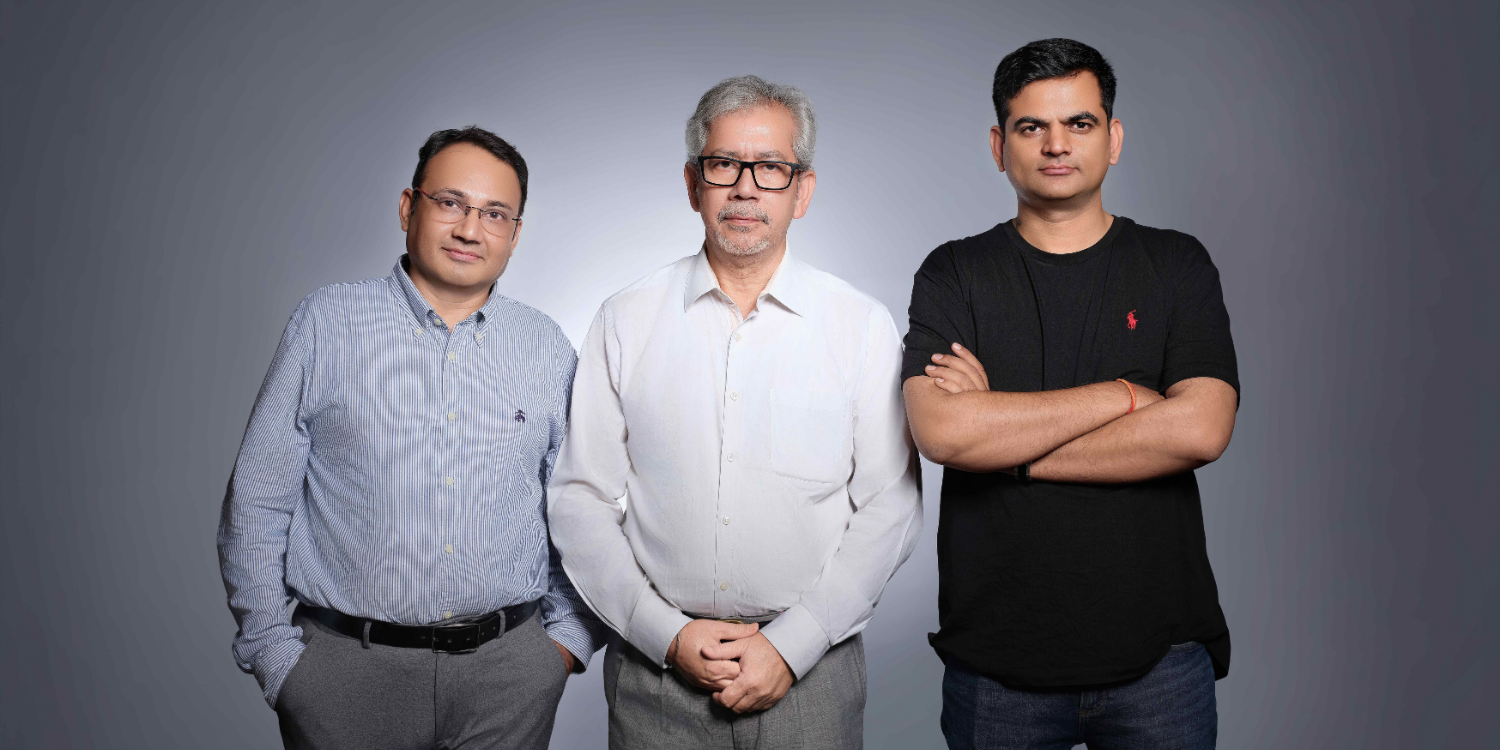
That gap became a mission. Bhati teamed up with Dr. Ranendu Ghosh, a former ISRO scientist, and Urmil Bakhai, a seasoned business leader, to found SatLeo Labs. Together, they envisioned a company that could become the “Thermometer of Planet Earth.”
Building the Heat Map of the Future
SatLeo Labs is creating a constellation of satellites that deliver sub-10-meter resolution, twice-daily thermal and visible imaging. Each satellite is equipped with onboard AI and edge computing to process data in orbit—slashing the latency between capture and insight.
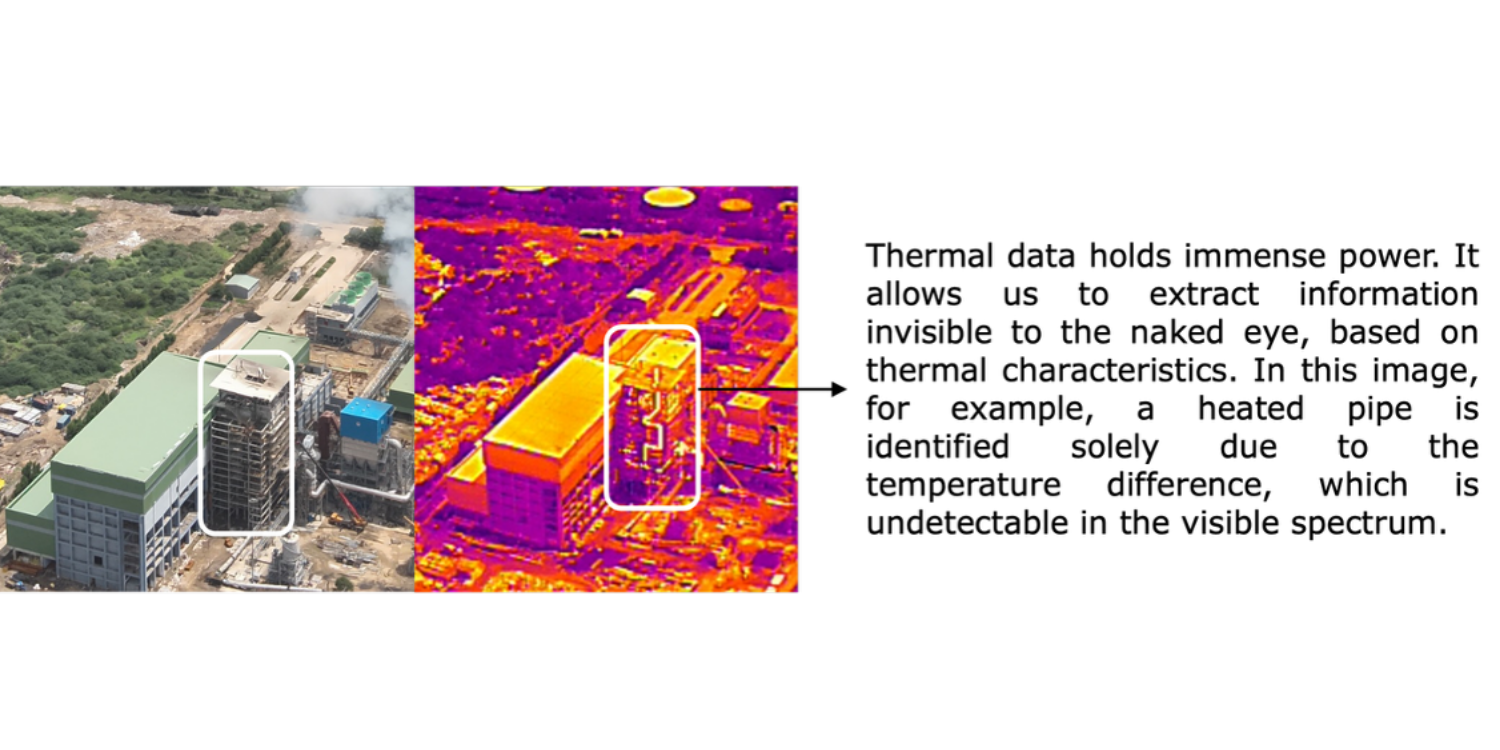
The Technology at a Glance
- Dual-band Infrared Imaging: MWIR for urban heat, defence, and industrial zones; LWIR for agriculture and environmental monitoring.
- Onboard AI: Real-time processing ensures faster delivery of actionable insights.
- API-first Delivery: Plug-and-play analytics via tools like the proprietary ‘Thermal Comfort’ layer.
This level of detail enables precision use cases, such as spotting urban heat islands, predicting crop yields with up to 35% higher accuracy, identifying fire outbreaks early, and tracking landfill emissions in real-time.
A Platform, Not Just a Product
SatLeo’s value lies not only in its satellites but in the Analytics-as-a-Service (AaaS) model that wraps around them. Its platform offers:
- Subscription access to fused historical and real-time thermal datasets
- Custom analytics for government and enterprise clients
- White-labeled APIs and SDKs for integration into external platforms
- Future tasking services to image custom zones on demand
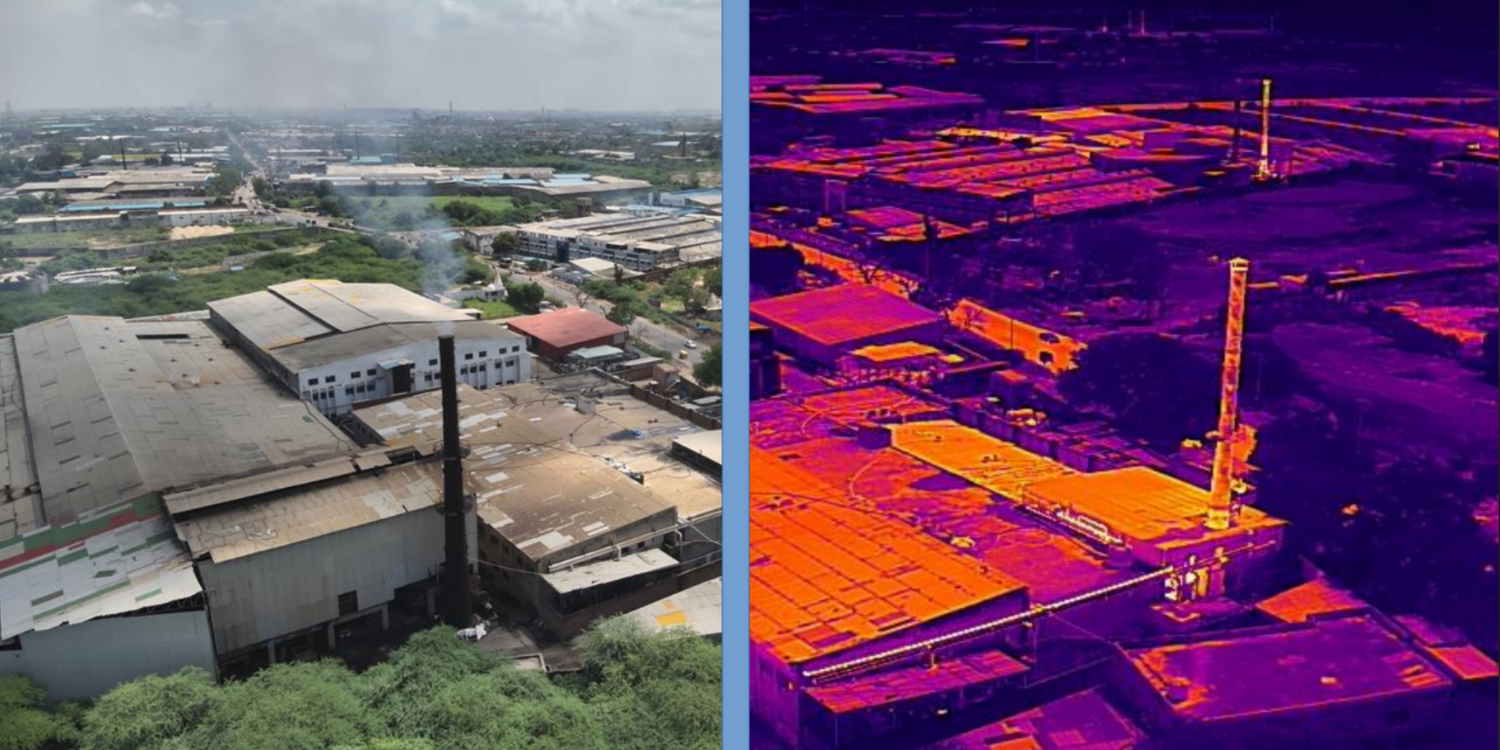
This scalable infrastructure is designed to serve agritech firms, municipal planners, energy utilities, defence bodies, and disaster response agencies across India, the Middle East, and beyond.
Fuelled by Institutional Backing and Vision
Incubated by IN-SPACe, with access to ISRO facilities, SatLeo sidestepped major CapEx barriers and regulatory hurdles early on. Their team of 20+ operates from offices in Ahmedabad and a mission war room near the IN-SPACe HQ.
The company has already piloted with an Indian municipal corporation, conducting landfill emissions and heat mapping. Discussions are ongoing with multiple urban and agritech stakeholders for further deployments.
Funding the Future
In its pre-seed round, SatLeo Labs raised $3.3 million, led by Merak Ventures, with participation from Huddle Ventures, GVFL, Java Capital, IIMA Ventures, and PointOne Capital. The funds are being utilised for payload and satellite development, securing regulatory approvals, expanding the team, and executing pilot programs for product testing.
With TAPAS-1—Thermal Access Platform for Analytics & Solutions—slated to launch in Q1 2026 as a tech demonstrator, and a commercial satellite scheduled for Q4 2026, the company is on a clear trajectory toward scalable thermal intelligence.
An Edge in a Competitive Space
In a field populated by global players like Satellite Vu (UK), OroraTech (Germany), and Hydrosat (US), SatLeo Labs stands out by leveraging its India-based engineering capabilities and cost-efficiency.
Its unique approach integrates dual-band infrared payloads, advanced in-orbit AI processing, and a product-first mindset that delivers seamless integration through robust APIs. With a strong focus on both domestic priorities and emerging global markets, SatLeo offers a differentiated and scalable platform for thermal intelligence.
Backed by India’s institutional space infrastructure, SatLeo is positioned to serve not just as a data provider but as a platform powering thermal intelligence for the world.
Lessons in Launching a Deeptech Startup
Bhati is clear on what made the difference: “Instead of spending years in stealth R&D, we went straight to real-world pilots. The problem was clear. The need was urgent.” IN-SPACe’s support further accelerated development by absorbing facility and testing costs.
The team’s hiring philosophy is similarly focused on engineering talent at the intersection of electronics, optics, mechanics, physics, and data science.
Vision: Twice-Daily Thermal Coverage, Planet-Wide
In the short term, SatLeo is expanding API pilots and refining its thermal analytics stack. By late 2026, with the commercial satellite operational, it plans to roll out live services across critical sectors. The long-term ambition: a global constellation offering twice-daily sub-10 m resolution thermal data to governments and enterprises alike.
<
p style=”margin: 30px 0px”>
From tackling heat stress in megacities to helping farmers navigate an increasingly unpredictable climate, SatLeo Labs is placing the Earth under a powerful new lens—one that could transform how we adapt to a warming world.
Discover more from News Hub
Subscribe to get the latest posts sent to your email.



